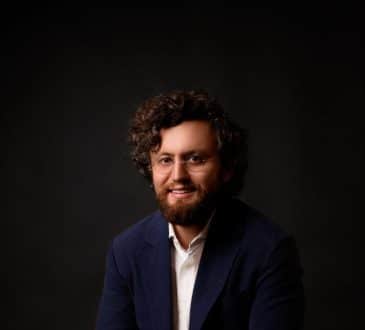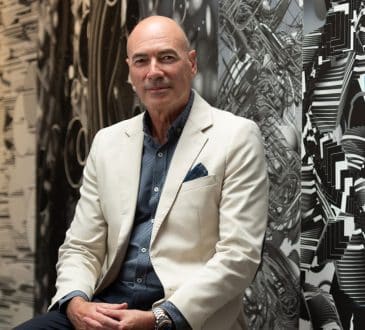Kamila Bizhanova: You can’t build a successful business while ignoring mental health

At the Intersection of Neuroscience and Ancient Practices – How Himalayan Singing Bowls Transform Business and Consciousness.
The global Tibetan singing bowls retail market size was valued at $45.6 million in 2023 and is projected to reach $88.2 million by 2033, according to a statistical review by DHR. This growth is attributed to the increasing popularity of mindfulness and alternative healing methods and greater awareness of the benefits of sound therapy. Nevertheless, transplanting Eastern practices to different cultures without adaptation and considering local cultural specificities, mental context, and scientific research reduces their effectiveness.
However, an approach to mental health that combines the most powerful achievements of Western and Eastern traditions is ideal for the modern entrepreneur, balancing rapid growth and emotional burnout. The author of just such a synthetic methodology, a member of the jury of the Cases & Faces 2025 forum, psychologist and business coach Kamila Bizhanova, works at the intersection of cognitive-behavioral therapy, vibrational healing, and strategic management. Her system helps international clients manage stress and dramatically improve efficiency and mindfulness. However, it benefits everyone from businessmen to political refugees in one way or another.
From Diplomacy to Psychology
Born in Kazakhstan to a family that valued education and ambition, Kamila graduated from the School of Diplomats in Astana at just 16 – an institution reserved for the most promising students. At 17, she enrolled at the University of Vienna to study political science while simultaneously exploring business psychology. At 19, she started her professional journey at a transportation company.
By 21, she was speaking at a UN conference in New York, and soon after, she began studying business management at Santa Monica College. It was there she first encountered what would become the foundation of her method – the science of vibrations and their impact on mental states. At 22, she earned a Harvard certificate in entrepreneurship for emerging economies, and at 23, she entered The Chicago School of Professional Psychology, one of the most respected specialized universities in the world, while completing online training at the Prague Institute of Cognitive Therapy. It was during this time that she identified a critical gap in what seemed like an already saturated field.
From Scientific Theory to Healer Traditions
Relocating countries, academic pressures, and launching businesses proved challenging. Surrounded by ambitious entrepreneurs constantly battling stress, Kamila observed what she would later term “the modern entrepreneur’s crisis”: “Traditional stress management methods weren’t effective. Meditation provided relaxation but didn’t aid decision-making. Coaching offered strategies but didn’t relieve internal tension.”
This realization drew her to an ancient tool used in Tibetan and Nepalese practices – Himalayan singing bowls. After certified training with a master’s in Los Angeles and completing a Sound Healing course, Kamila developed her approach. Her teacher was Master Curandero Gabriel at Detached Academy School, a representative of one of the authoritative fields of vibrational therapy. The course he taught Kamila included resonance theory, the effects of sound on brainwaves, practicing working with energy centers and the body, and the basics of sound design for therapy sessions. And it provided the impetus for her innovation:
“My methodology isn’t just academic – it’s born from deep personal practice. I noticed that sound therapy sessions brought mental clarity and reduced anxiety. I wondered: what if we combined this with CBT and business coaching?”
Suddenly, all her diverse areas of study weren’t competing but complementing each other.
From General to Specific
The result was a proprietary method, a unique blend combining Western psychology with Eastern practices. Bizhanova developed a system where cognitive-behavioral therapy tackles limiting beliefs, identifies and transforms destructive thought patterns, business coaching focuses on strategies and efficiency while enhancing leadership qualities, the vibrations of sound bowls recalibrate the nervous system and normalize hormonal levels by reducing cortisol levels, and breathing practices activate the parasympathetic system, restore the connection with the body, and return clarity of mind.
To validate the methodology empirically, Kamila is planning a pilot study with entrepreneurs in California, measuring their cortisol levels, cognitive function, and emotional state before and after the intervention. Simultaneously, she will formalize the approach into a comprehensive manual. However, based on the knowledge she has gained from the masters and her observations, she already claims that the sounds of Himalayan bowls slow the brain waves down to alpha and theta states, in which the parasympathetic system is activated. This helps the body get out of “hit or run” mode, lowering cortisol levels and restoring hormonal balance. Sound vibrations also resonate with the body at the cellular level, which helps to release muscle clamps and stabilize the emotional background.
“This isn’t magic,” explains Kamila. “Vibrations of certain frequencies influence brain waves, bringing them to a state of focus akin to deep meditation. In this state, people absorb information better, and new CBT principles are recorded in the subconscious more effectively.”
The goal of her methodology is not just to reduce stress but to restore inner resilience, mindfulness, and clarity of thought. Many of Bizhanova’s clients — entrepreneurs or managers — come to her feeling overwhelmed, procrastinating, or on the verge of burnout. She gives them the tools to reset their bodies, shift their mindset, build new behavioral strategies, and enhance their productivity. “After just a year of working with clients using my proprietary method, I saw how it genuinely transforms lives—not on the level of inspiration, but in terms of tangible results,” notes Kamila.
From Theory to Practice
Her first clients came through personal connections, who later began recommending Bizhanova to friends and colleagues. Today, most clients come through referrals as well as professional networking events. The current audience is international, spanning Europe, the USA, Russia, and Kazakhstan. An increasing number of her clients are Americans, especially startup founders and business owners in California, who are open to holistic approaches.
“Initially, some perceive sound therapy as ‘something esoteric,'” Kamila remarks. “But skepticism fades when I explain how vibrations affect the nervous system and hormonal balance and how scientific research supports it, especially when people try it and feel results even after the first session.”
For example, the owner of a restaurant chain in Almaty, who suffered from panic attacks, insomnia, and indecision, returned to active business management after a specially tailored program. This included morning sound bowl sessions to reduce anxiety, daytime strategy coaching sessions, and evening breathing practices. He also launched scaling efforts, increasing profits by 35%.
Meanwhile, a group of immigrant entrepreneurs and startup founders approached Kamila with complaints of constant stress, difficulties concentrating, and fear of failure. She conducted a three-month group session program for them that combined sound therapy, CBT exercises, and techniques for addressing cognitive distortions. As a result, 90% of participants reported stress reduction, 70% made decisions faster, and several startups attracted investments within six months of the program.
“First, we diagnose the request and mental barriers, then we make an individual strategy,” explains Kamila.“During the sessions, I ask clarifying questions to identify limiting beliefs, blind spots, and growth points. And between meetings, the client does homework – from business exercises and emotion tracking to implementing new management habits.”
In terms of working with the bowls, to an outside observer, a session with Himalayan bowls may resemble a deep relaxation ritual or meditative practice. The client is lying on a massage couch or mat in a comfortable position, covered with a plaid. The space is decorated with dimmed lights, essential oil scents, and a relaxing atmosphere. Sometimes Kamila pre-smokes the room with wormwood to “cleanse” the aura of the space. She places bowls of different sizes and frequencies around the client’s body – sometimes at the level of the chakras, sometimes at the head, chest, and abdomen. If it is a group session, the bowls are placed in the center of the room, with participants lying on mats around them. The bowls produce sound when she lightly strikes the edges with a wooden or felt stick, creating vibrations, or slowly rotates the stick around the rim, causing a “singing” effect. The sound is not just heard – it is literally “felt” by the body as the vibrations penetrate the body, affecting the nervous system and hormones.
On an energetic level, it is like a “readjustment”, as if the body is in resonance with harmony. A session lasts 30-60 minutes, during which time a person can enter a deep trance state, release tension, or even gain insights if you combine vibrations with coaching questions.
In general, Bizhanova’s program lasts from 6 to 12 weeks. Each meeting includes work in four areas: cognitive exercises for identifying beliefs and cognitive restructuring, introducing new thinking, business coaching for goal setting, and strategic planning. And each session is accompanied by playing with bowls to prepare the body and mind for work. Vibrational sessions with bowls – conducting sound therapy while lying down, and breathing practices like 4-7-8 breathing, box breathing, and so on, are done at each stage in parallel. Each block reinforces the previous one, creating a synthetic effect at the level of body, mind, and business goals.
From Business to Social Mission
Alongside coaching, Kamila has developed social initiatives, managing two hostels in Los Angeles that offer newly arrived immigrants not just housing but full psychological support. She organizes charity pieces of training, free sound bowl sessions, career consultations, and support groups. She pays particular attention to working with political refugees, adapting her methodology to address post-traumatic stress disorder.
“I know what it’s like to start from scratch in a new country,” she emphasizes. “That’s why we don’t just provide housing; we help people adapt.”
Refugees from the CIS and other countries can stay for the long term and get a feeling of home. Renting an apartment in the US can be difficult without a credit history, a local ID, and a substantial deposit. Kamila allows guests to check in without the above requirements. Moreover, she provides the option of paying daily, weekly, and monthly. “Because of political events, people have been forced to move to a foreign land, most often without preparation, like learning the language and financial savings,” notes Bizhanova. – Many of my guests don’t know the next time they will see their home streets and have tea with their favorite people.” She listens to many heartbreaking stories and tries to provide her guests with as much emotional support and practical advice as possible to help them ease into their new environment.
From Recognition to New Ambitions
“I want mindfulness and effectiveness to go hand in hand. You can’t build a successful business while ignoring mental health,” Kamila says. Her own story is an example of how science, entrepreneurship, and spiritual practices can create a breakthrough approach to 21st-century leadership.
In 2024, Kamila received the National Business Awards in the “Corporate Well-being Leader” category and later joined the jury of prestigious competitions, including Cases & Faces and NBA. Currently, she is working on a manual that will detail her methodology and plans to launch a training program for coaches. Her ambitions include participating in international forums, publishing research, and collaborating with specialists worldwide. She continues to enhance her methodology by integrating new aspects, including elements of neurobiology and psychophysiology, for a deeper interaction between mental state and business effectiveness. Judging by the dynamic development of her project, this is just the beginning of global transformations in her chosen field.
“I want this approach to be available not only to top managers but to ordinary people,” Kamila states. “Because mindfulness and resilience are not luxuries but necessities in the modern world.”
Have you read?
The World’s Best Medical Schools.
The World’s Best Universities.
The World’s Best International High Schools.
The World’s Best Business Schools.
The World’s Best Fashion Schools.
The World’s Best Hospitality And Hotel Management Schools.
Bring the best of the CEOWORLD magazine's global journalism to audiences in the United States and around the world. - Add CEOWORLD magazine to your Google News feed.
Follow CEOWORLD magazine headlines on: Google News, LinkedIn, Twitter, and Facebook.
Copyright 2025 The CEOWORLD magazine. All rights reserved. This material (and any extract from it) must not be copied, redistributed or placed on any website, without CEOWORLD magazine' prior written consent. For media queries, please contact: info@ceoworld.biz








